Thinking of buying a guitar amp but confused by all the jargon? It takes quite a bit of time to get your head around all the ins and outs, especially when there are so many brands, specs and features out there.
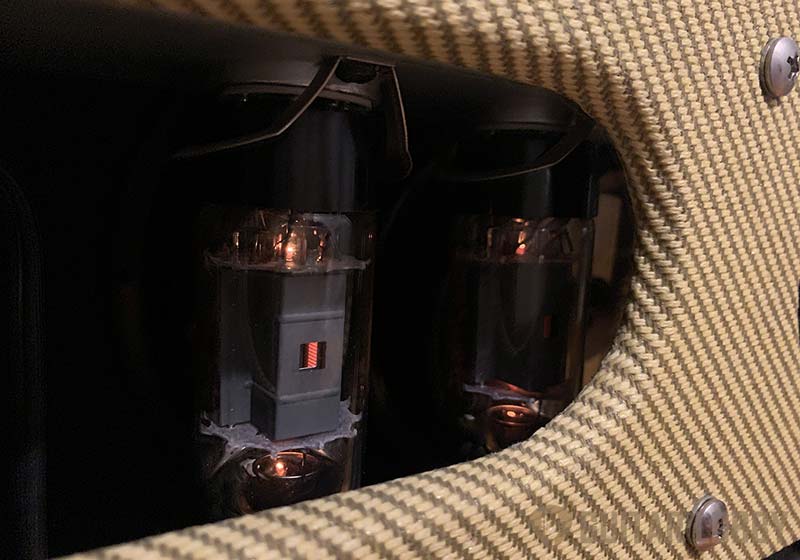
Fortunately, there’s some high-level information you can learn and understand quickly without getting overly technical that will really help you figure out the important criteria so you can find the amp that’s right for you.
What Are the Different Types of Guitar Amps?
The four main types of guitar amps are Tube Amps, Solid-state Amps, Modeling Amps, and Hybrid Amps. Each type uses a different technology to amplify a guitar signal and produce a tone.
Tube Amps: Also known as valve amps, these use vacuum tubes to amplify your guitar signal and push it into the speakers. It’s an old technology that’s historically been used in communications setups such as radio stations. They produce a “vintage” sound.
Solid-state Amps: These digital amps use todo.
Modeling Amps: These amps “model” the sound profile of other amps.
Hybrid: A combination of tube and solid-state. These are generally more affordable than equivalent tube amps, while still producing arguably comparable sound.
All four guitar amp types can come with different speaker configurations, which also has a big impact on your sound.
Whether you’re new to the amp-buying game, or you’ve got a pretty strong idea of what amp is right for you, read on for more detailed information on guitar amp types – knowing more about the various types of amps can help you make sure you’re getting the right amp for you.
1. Tube Amps
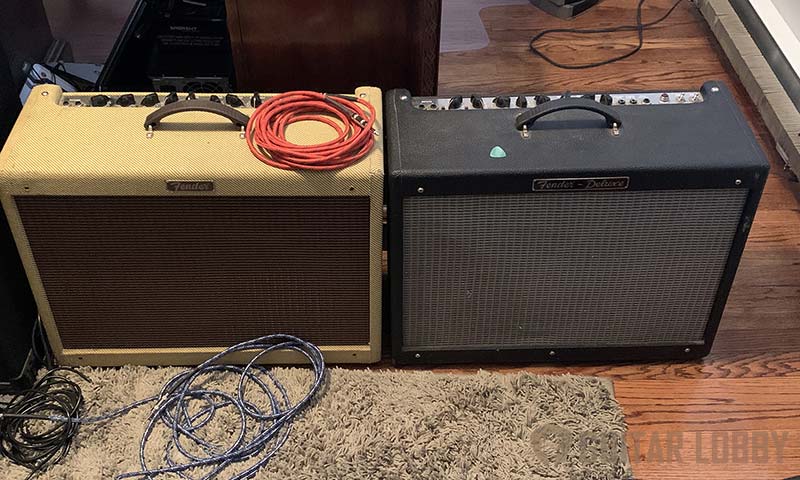
We can do a lot more with digital technology than ever before, but many guitar players will still make a beeline to old-school tube amps for their powerful, vintage tone; and indeed, most of the world’s most famous guitarists are usually playing them. They tend to be more expensive than solid-state or hybrid, but there are also lower-priced tube amps, so it’s worth looking for tube amps in your budget range rather than ruling them out on price alone.
Tube amps use vacuum tubes to amplify the input signal from your guitar and push it back into the speakers. They’re a completely analog technology that will function differently depending on conditions, making them great for tone-shaping; turn them up, and they’ll naturally go into overdrive; with subtle movements like turning down the guitar volume, you can get a softer, cleaner sound.
Tube amps are made by most of the big amp brands and many of your favorite players, both old and new, are probably playing through tube amps. Everyone from Jimmy Page to James Hetfield is playing a tube amp of some description.
Types of Tubes
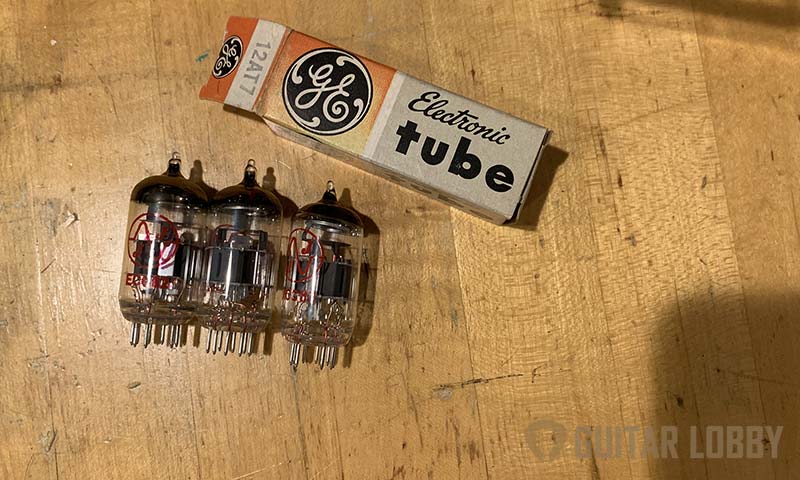
There are quite a few types of tubes out there, and the type of tube does make a difference to its tonal character. It’s worth noting that the tubes in a guitar amp have two jobs: power tubes control the whole amp and its overall voice, which is why amps of certain brands have recognizable tone profiles. Preamp tubes control the tonal sweep over the EQ, as well as gain, FX loop, and reverb (for amps that have these).
Pros
- Warm distortion, from gorgeous soft tones to aggressive overdrive
- Easy to use
- It’s what the pros use!
- If you take care of your amp, it can last for a lifetime.
- Response: more responsive to the nuance of the player, with subtle differences in sound depending on your style (and the same amp can sound quite different when played by someone). In comparison, solid-state amps are more crisp, and while you can apply a lot of effects digitally, they won’t be able to react to your playing style in the same way.
- That iconic warm, harmonic tube sound! Many players love the different way that the tube amp works, being so clean when you play soft, slightly distorting on an accented note, and cranking up with overdrive when you play hard.
Cons
- Tube amps don’t tend to produce good tones at low volumes, and they need to be cranked to reach overdrive (unless you use an attenuator)
- Compared to solid-state amps, they’re low-tech and not particularly versatile. If you’re dreaming about high-level tone-tweaking, you may want an amp with more modern features.
- Tend to be more costly than solid-state amps
- Vacuum tubes are made of glass, and they WILL need replacing over time – if you don’t keep on top of this, your vacuum tubes will break or burn out. And potentially they could die on-stage while you’re gigging.
- Awkward.
- Tube amps tend to be heavy! And the higher the wattage, the heavier they often are; for example, the 20W Fender 64 Custom Deluxe Reverb all-tube tone beast weighs in at 38.2 lbs (17.3kg), while the 20W solid-state modeling amp Fender Mustang 1 V.2 is a much more back-friendly 24 lbs (10.8kg).
- If you’re looking for chimey cleans, solid-state may be the way to go – tube amps are noisy by nature, so you can get a bit of hiss.
Should I get a Combo or a Head Amp?
Firstly, let’s talk about how a head and cab work. A guitar head & cab is a two-piece rig, with the head part controlling your guitar tone and how much power you can deliver to your output, while the cab (cabinet) is a speaker or set of speakers that receives the powered input signal from your amp. Amp heads will generally connect to cabinets using speaker cables, and heads and cabs are matched up by impedance (ohms; usually 4, 8, or 16), which is the level of resistance a speaker offers to an input signal.
A head and cab setup can be switched around since as long as the ohms match up, you can mix and match your head with any cab (or your cab with any head). That makes it easier to upgrade your rig later, to borrow someone else’s head or cab, and to transport both components separately when you’re gigging.
On the other hand, a “combo” amp is an all-in-one amplifier with both the head and cab built into each other; the head will still determine the tone and controls, while the cab will still make the noise – but they’re all wired in and ready to go, you’ll spend less time setting up, and you don’t have to worry about matching up the impedance. They sound good straight away, so you can arrive at your gig confident that you’ve already got the sound just right.
How do I maintain a tube (valve) amp?
This is important to consider when you’re thinking of buying a tube amp, as it is a bit of a bother. Solid-state amps don’t really require much in the way of maintenance – unless something goes wrong with the circuitry, you can pretty much just forget about what’s under the hood. Easy. On the other hand, with tube amps, your amp works via a series of glass tubes, that are a bit like lightbulbs; how often you need to change them depends on how much you use them, but you can generally expect 5,000 to 10,000 hours. For a gigging guitarist, it’s estimated that you should change your power tubes every year, and preamp tubes every couple of years; for home guitarists, it’s going to be every five years or so. It’s good to have spares on you in case a tube dies and to check your amp regularly. Some things you can keep an eye on are how well it performs; some warning signs include producing tired, ragged sounds or becoming overly noisy.
You should also tune-ups your amp by tightening up loose parts and cleaning any dirt. This should improve performance even for an amp with nothing technically wrong. Keep an eye on the tube sockets, making sure they’re clean so that circuits remain uninterrupted; also, dust can gather in access points. If your tone or volume controls are getting scratchy, check that they’re functioning properly too.
How about the tube replacement angle? Well, fortunately, replacing the tubes isn’t as hard as you might suspect. You can replace all the tubes at once (which is better, but more expensive) or just replace a tube that’s causing problems. First of all, switch your amp off and let it cool down for about five minutes; next, very carefully take out the tubes (remember, they’re made of glass and are very fragile!) Use a piece of cloth so you’re not touching them directly, and to pull them out, just wiggle lightly as you start pulling. They’ll get loose before long, and will be ready for you to pull them out.
Next up, your new tube replacement. Use that cloth to pick your new tube up, and carefully align it against the tube socket. Push it in gently and wiggle a bit until it’s in the right place. Repeat this for all tubes. Finally, test whether it’s working correctly by turning your amp to standby and warming it up for five minutes before switching it on!
2. Solid-state Amps
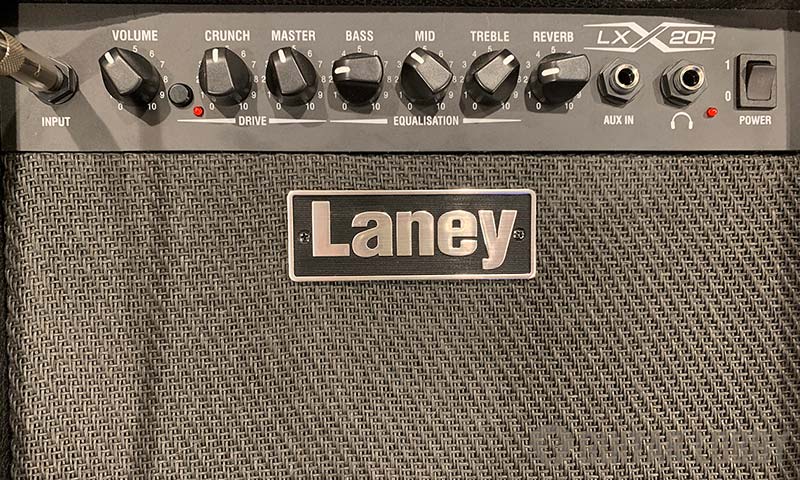
Solid-state amps pass your guitar’s input signal through conductors on a circuit board, rather than through vacuum tubes. Your input signal is amplified, augmented by whatever digital settings you have in place, and then sent through the speakers. While early solid-state amps often experienced distortion due to higher voltage levels, gain circuits now let you control how much distortion you’re dialing in and what type of distortion it is.
Solid-state amps are cheaper to produce, and generally a lot lighter than their tube amp equivalents. They’re also less fragile and require less maintenance, and replacement parts are cheaper (in fact, you can even use a DIY amplifier kit and make one yourself!) However, you won’t find as much in the way of high-end solid-state amps, because the pros tend to go straight for vacuum tubes. However, solid-state amps are great for jazz because of their cleaner sound; for example, the Roland Jazz Chorus has achieved a cult following.
Solid-state amplifiers will vary significantly in output power, functionality and features, size and weight, price, and sound quality; depending on the specs of the amp, they may be better suited to home practice, suitable for gigging, or even studio recording. You’ll find great options for each of these uses, and some amps (especially with variable power) are just as suitable for home practice as they are for gigging and recording. Technology opens up a lot of exciting options that tube amps just can’t compete with, so if you’re into a bit of gadgetry, you’ll find plenty of fun here.
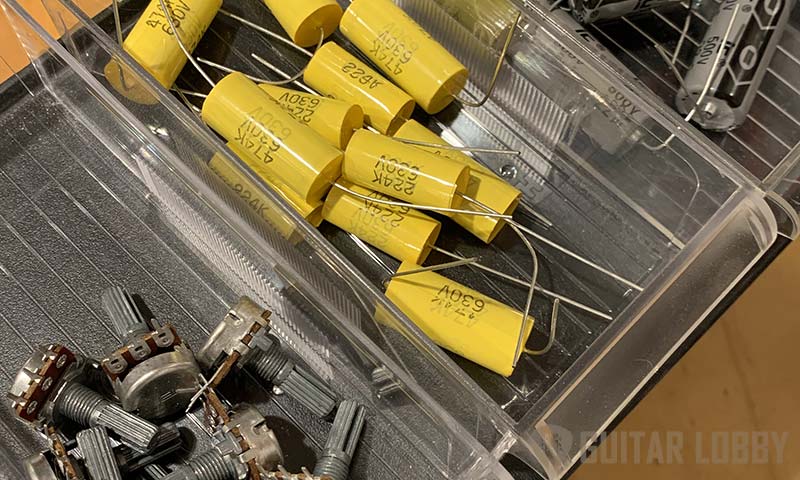
Pros
- Cheaper. Solid-state amps contain fewer parts, and those parts are less expensive, making them a more affordable option than tube amps.
- Lighter and smaller. As we mentioned, tube amps can be distinctly difficult to lug around. If you’re gigging and don’t want to hire a roadie or buy a trolley, solid-state may be the way to go.
- Easier to maintain. Gigging guitarists using tube amps generally have to change power tubes annually and preamp tubes every two years or so. On the other hand, solid-state amps are pretty much set-and-forget: they’ll usually work just fine with all-original components for decades to come.
- Less fragile. Because the vacuum tubes in tube amps are made of glass if you smack your amp and the glass could break and the amp just won’t work. Solid-state amps are much more robust and can take more of the harsh realities of transporting an amp.
Cons
- Most players don’t think they sound as good. This is a bone of contention, but many players really value that natural tube tone and don’t reckon solid-state can compete.
- Less warm. When you’re operating a tube amp, it produces distortion. This can be mellow and sweet (“warm”), which is an attractive sound for electric guitars. Tube amps naturally mitigate some of those piercing high frequencies, and at the same time add a certain coloration to all frequencies; this isn’t something that solid-state amps can do. Solid-state sound is “purer”, but many feel that a little of the right distortion is a good thing!
- Solid-state amps can’t do heavy amp distortion. If you want to go heavy on the overdrive, solid-state will disappoint. There are certain sounds that you’ll only get from a tube amp.
- Obsolescence. You can reasonably expect to be able to replace your vacuum tubes for many decades into the future, which means they will likely always be on the market and not so hard to find. On the other hand, solid-state amps come and go, and often don’t need replacement parts – so ten years down the track, they should still be working fine. BUT, if they do happen to need part replacement, and the model is discontinued, you may potentially find it a struggle to get the part you need.
Solid-state Vs Tube Amps
Technically speaking, the difference between these two types of amps is pretty straightforward: vacuum tubes versus transistor amplification. But that doesn’t tell you much about the benefits of solid-state vs tube, and what’s in it for you. It’s those audible differences that matter the most, and a significant difference to consider here is whether you’re looking for that fat, warm sound that tube amps are so loved for. And that warm sound is particularly awesome when you overload the tubes and reach overdrive. There are many overdrive pedals that try to effectively replicate that sound, but for some audiophiles, you can’t beat genuine tube tone.
What your solid-state amp will sound like depends a lot on the amp’s circuitry, and while there’s a bit of stigma around solid-state amps, there are some serious benefits as well. For one, as a newer technology, there’s a bit more you can do with them – like modeling the tone profiles and characteristics of potentially hundreds of other amps, for one! (More on modeling amps later.) You can also hook up to apps to download tone profiles set by some of your favorite guitarists; it’s pretty awesome to be able to access such serious tonal diversity at your fingertips. Cheaper, lighter, and smaller are a pretty big selling point too, and being able to enjoy great sound quality even at low volumes so you can practice quietly at home at night (even with headphones!) without waking the family/your neighbors/the dead.
3. Modeling Amps
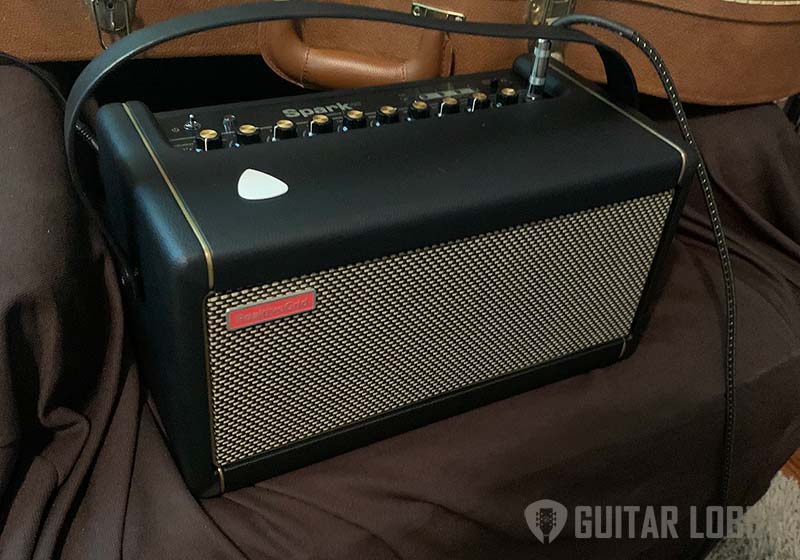
Next up, modeling guitar amps! Sometimes called digital guitar amps, these are a next-level evolution of solid-state amps, using technology to produce a huge range of tones and effects. In fact, with only a bit of fiddling, you can select from emulated models of potentially hundreds of different amps – a pretty exciting proposition considering how implausible it would be to have access to hundreds of amps in real-life! Modeling amps will try to recreate the tone of different amps, from bringing you convincing amp profiles of favorites like Marshall and Fender, and letting you switch it up with (again, potentially hundreds of) presets and user slots. And you can even take this a step further with amp profiling. For example, the Kemper Profiler can actively replicate any amp; you just connect your chosen amp and play some tones and samples, and it will scan the amp and reproduce it in real-time. It also comes with a whopping 200 amp profiles and 72 effects, which could keep you busily tone-tweaking for a long time!
Like solid-state amps, modeling amps initially faced a lot of stigmas, with guitarists dismissing them as poor-quality copies. But the technology got much better as the years went on, and today’s modeling amps pack a serious punch: you’ll find plenty of YouTube examples of blind tests of real and modeled amps, and for many of us, it’s pretty hard to tell the difference! But don’t just try to work out what’s “real”; rather, this exercise is above all about thinking whether you like the resulting tones. If you do, then modeling amps are really something to consider, because being able to access hundreds of amp profiles in the one handy amp means you can unlock a world of unprecedented tonal flexibility. And pretty much every major guitar amp brand offers a modeling amp nowadays, as well as amp brands that specifically specialize in modeling tech, so you’ll find plenty of exciting options to play within this area.
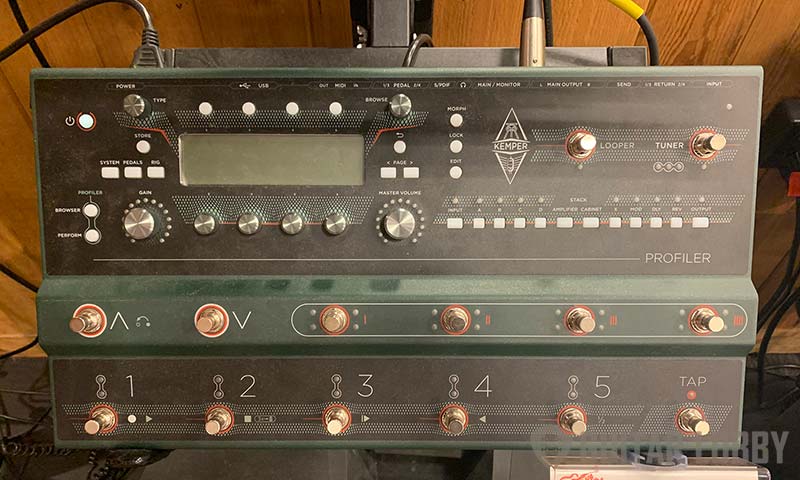
Pros
- Versatility. Let’s face it unless you win the lottery, you’re probably not going to be able to afford a hundred amps and somewhere to store them. You also wouldn’t want to lug a bunch of amps to gigs. Having a ton of amp profiles available at the touch of a few buttons is pretty exciting, and you can explore a wide range of genres and sounds – this is especially awesome if you’re a home player and learning to play other people’s songs.
- Convenience. Back in the day, you’d need to carry around a whole lot of equipment as well as your amp: pedals, cords and cables, power adaptor, pedalboard, and so on. Even Getting ready to jam at a friend’s house could feel like a chore. But with a good modeling amp, a footswitch, and a cable, you’re pretty much ready to go – no array of pedals needed.
- Cost. You can find some pretty cool ready-to-gig modeling amps in the $300-600 range, offering up convincing amp profiles of tube amps. On the other hand, getting a quality tube amp, with pedals and pedalboard, power supply and various cables can easily cost three or four times that.
Cons
- Overkill. If you have a pretty defined idea of what your signature sound is going to be, and you’re not going to be doing much genre-bending, modeling amps might not really have much to offer you, and you might be better off just finding just the one amp with an awesome natural tone.
- Harder to use. While they’re much easier to use than they used to be, old-school technophobes who are used to just plugging their gear in and playing may find the bells and whistles of apps, computer interfaces, and so on a bit overwhelming.
- Missing the flexibility of pedals. While solid-state amps are generally very pedal friendly, modeling amps can struggle with pedals, meaning that if you don’t like for example the chorus sound, you can’t just swap out with a different chorus pedal as you’d normally do with a pedal setup. You can’t really upgrade the setup that’s built into your modeling amp in the same way that you can upgrade your pedal setup.
Modeling Amps vs Tube Amps vs Solid-state Amps
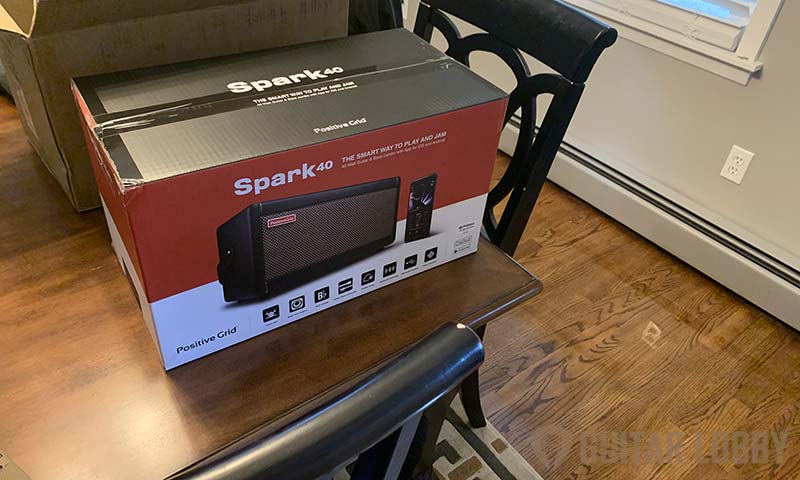
Whether to go solid-state, tube or modeling amp isn’t an easy decision – what works well for another guitarist may not be so great for you. Thinking about the advantages and disadvantages is key; if money’s not an issue, you love that vintage sound and you don’t mind moving pedals around, a tube amp could be just right for you; if you want something that’s pocket-friendly and lets you crank it up at low volume, solid-state may be a better choice; and if you’re wanting to explore a diverse world of sound, modeling amps can be very exciting.
We’d suggest modeling amps for:
- Gigging musos in cover bands, who want to be able to switch between a range of amp models to really do justice to the original tones of their favorite songs.
- Hobby guitarists: Modeling amps are affordable, and let you really explore a wide range of music styles past and present. They’re an awful lot of fun, whether you’re playing someone else’s songs or trying your hand at a bunch of different genres.
- Looking for a simple practice amp: Plug in, dial your favorite sound and start playing without fiddling with cables and pedals. Easy!
On the other hand, modeling amps won’t have so much to offer for guitarists who pride themselves (or intend to pride themselves) on a unique sound that they’ve crafted, or who will generally be playing with roughly the same sound profile all the time. Instead, you’ll probably want to get just the one amp that delivers just the natural tones you’re looking for, and moderate these with effects to really craft your signature sound; plenty of guitarists (hobby and pro) take this route and being able to switch pedals in and out gives you certain flexibility that (for all their own fantastic flexibility in other departments) modeling amps just can’t compete with.
4. Hybrid Amps
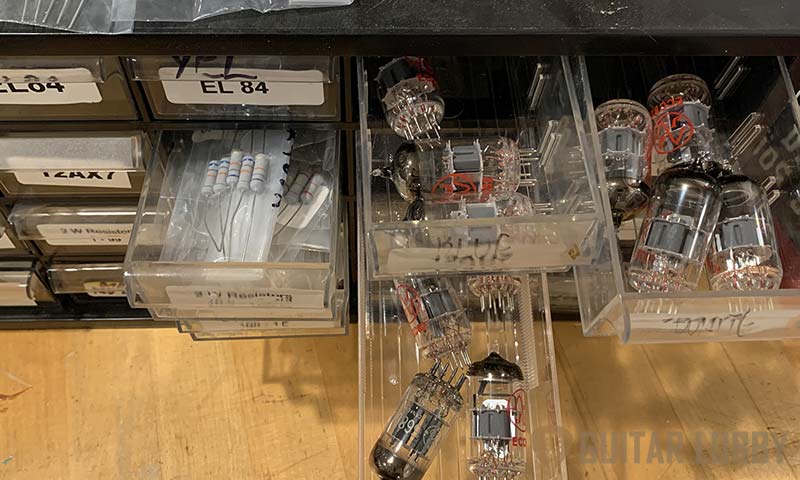
This term refers to a guitar amp using multiple technologies; basically, it’s a combination of solid-state and tube. For example, a tube preamp with solid-state power amp, a modeling preamp with tube power, and so on. These amps use at least one real vacuum tube for authentic tone; for example, using an actual tube in addition to the solid-state power section of their amps, and potentially using a tube in preamp and solid-state circuitry in the power section for tube tone without the need for power tubes.
Pros
- Best of both worlds. Hybrid amps are designed to give you the best of tube and digital, combining vacuum tubes with digital circuitry for a great balance of size, weight, sound quality, and price.
- Versatility and warmth. They offer up digital versatility that’s superior to tube amps, and a preamp tube will still beautifully color the tone for that “warm” quality that tube amps are so loved for.
- Power. A solid-state power section is less weighty, and offers up more powerful volume production, making them a great choice for gigging and recording alike.
- Price. Often significantly cheaper than an equivalent all-tube amp.
Cons
- Weight and size. Compared to a modeling amp, they’re a fair bit heavier. They’re also larger than solid-state amps (because of the partial tube construction).
- Maintenance. There are tubes inside, so you’ll need to do the usual maintenance.
- Middle-ground isn’t for everyone. You don’t get all the convenience (and cheaper price) of solid-state, and while it’s warmer than solid-state, you don’t get the full warmth. But on the other hand, if you’re happy with some tube warmth at a price that’s closer to solid-state, this may be quite appealing.
Summary
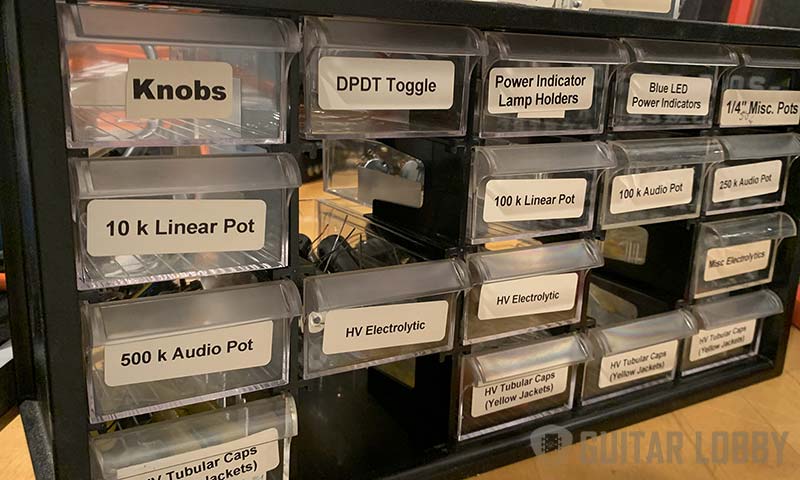
By now, you’ve probably got a pretty good grasp on the four types of guitar amps and their advantages and disadvantages. There’s no one best amp out there – rather, it’s a question of thinking through about what amp is right for you. The best way to do that is to think about what matters to you, and how you’ll be using the amp. If you’re going to be gigging, and you want something that’s easily transportable, solid-state may be the way to go; if you’re looking for a signature sound with warmth and distortion, then the flexibility of modeling amps wouldn’t do much for you, and you might not be satisfied with the “purer” sounds of solid-state. On the other hand, if you like to try a variety of different sounds, and you might be feeling folksy one day and hard rock the next, modeling amps could just the ticket.
Next question, are you planning to record with your amp? It’s generally a lot easier to record with a solid-state amp than a tube; many solid-state amps even have Bluetooth so you can go full wireless.
Choosing a guitar amp isn’t an easy task, especially when it feels like there are infinite choices out there and so many different criteria – from size and weight to features and functionality. Start with thinking about what you’ll be using it for; from there, you can significantly narrow down the list of amps you’re considering, and then you can filter further based on other factors that matter to you like tone, versatility, portability, and so on.
Buying a new amp can be a bit overwhelming, but hopefully thanks to our guide it’s now more exciting! And if you find an amp that’s right for you, you can enjoy many more years (or even decades) of happy playing. If you’d like to know more, head to our Amps category, which includes guides to the best portable guitar amps, best metal amps (combo and head), and guitar amps under $500.

My name is Chris and I’ve had a passion for music and guitars for as long as I can remember. I started this website with some of my friends who are musicians, music teachers, gear heads, and music enthusiasts so we could provide high-quality guitar and music-related content.
I’ve been playing guitar since I was 13 years old and am an avid collector. Amps, pedals, guitars, bass, drums, microphones, studio, and recording gear, I love it all.
I was born and raised in Western Pennsylvania. My background is in Electrical Engineering, earning a Bachelor’s degree from Youngstown State University. With my engineering experience, I’ve developed as a designer of guitar amplifiers and effects. A true passion of mine, I’ve designed, built, and repaired a wide range of guitar amps and electronics. Here at the Guitar Lobby, our aim is to share our passion for Music and gear with the rest of the music community.
